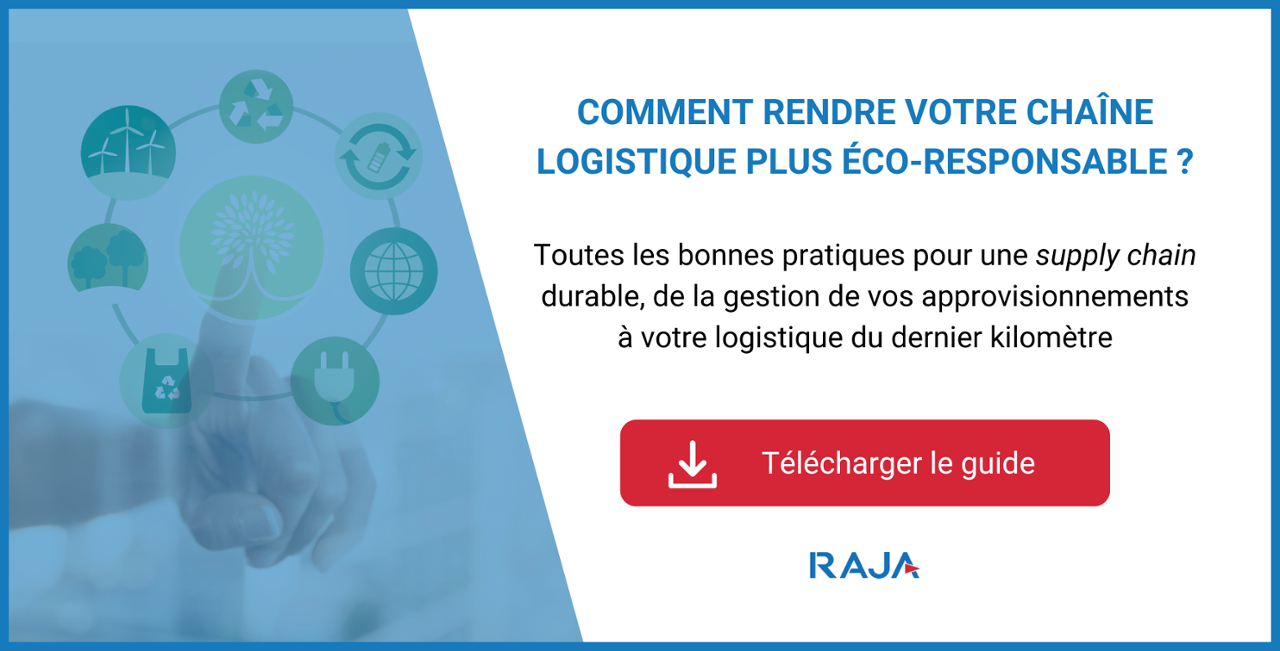Among the acronyms that are stirring up the business world, “CSR” has held an important place for several years now. Behind these three letters lies a simple concept: that of limiting the negative impact of a company on humans and the environment, while ensuring its competitiveness.
Take stock of the concept of CSR with this article, and start thinking about how to link CSR and logistics.
What is CSR?
The acronym CSR stands for “Corporate Social Responsibility“, sometimes also called “Corporate Social Responsibility“.
It was the European Union that first defined this concept in 2011, in its third Communication on CSR. The definition is: “the voluntary integration by companies of social and environmental concerns into their business operations and their relations with stakeholders”.
In sum, CSR can be defined asthe set of approaches that enable a company to contribute to sustainable development, and to have a positive impact on society.
What does the law say about CSR?
CSR is a concept integrated into French law.
It can be found in…
- Article 1833 of the Civil Code, where it is mentioned that the corporate object of all companies now includes consideration of social and environmental issues
- Article 1835 of the Civil Code, which stipulates that companies that want to do so can give themselves a raison d’être, in line with their CSR policy
What are the pillars of CSR?
It is the ISO 26000 standard, which regulates corporate standards, that defines the scope of Corporate Social Responsibility.
In this framework, 7 pillars of CSR are highlighted:
- The governance of the organisation, which must be orchestrated in such a way that the company’s responsibility is economic, social and environmental at the same time.
- Human rights
- Labour relations and conditions
- The environment
- Fair practice
- Consumer issues
- Communities and local development
To achieve ISO 26000, companies must follow these 7 pillars to the letter. However, many companies follow these guidelines without actually wanting to obtain this standard.
How can logistics contribute to corporate CSR?
While the CSR approach is often led by the company’s General Management, the transport and logistics division has a crucial role to play in the deployment of this strategy.
Here are some ways to look at CSR in your logistics department.
Following the Logistics and Transport CSR framework
The Ministry of Transport, the Ministry of the Economy and ADEME have set up a CSR reference framework specifically dedicated to the logistics sector.
It is neither a label nor a standard, and companies are under no legal obligation to comply. However, you will find in this benchmark a good number of avenues to organise your logistics operations by taking CSR into account.
It is organised in three parts:
- The fundamental issues, to be implemented as a priority for maximum environmental and social impact
- The major issues, which you should focus on in a second phase
- The complementary or specific issues, which you can deploy if they concern your company’s location or sector of activity
.
This CSR Logistics benchmark is available directly on the Ministry of Ecology website.
Deploying a CSR-oriented procurement strategy
Your logistics CSR strategy starts upstream of your supply chain, i.e. at the level of your procurement.
Make sure you choose CSR-committed service providers who meet the highest standards of human rights, eco-responsibility and economic fairness. To do this, don’t hesitate to consult the labels and standards that these service providers have been able to obtain, true signs of commitment to sustainable development.
Think of your warehouse in an eco-responsible way
The logistics organisation of your warehouse can also contribute to your company’s CSR strategy.
Beyond respecting nature and the communities surrounding your warehouse location, you can notably…
- Review your inventory management and picking methods, so that they limit movement in the warehouse, and therefore the use of energy-consuming handling equipment.
- Proceed with energy-saving retrofits, such as relamping or the installation of automatic doors that prevent heat loss.
- Install equipment to improve waste management in the warehouse.
To find out more, see our 5 best practices for a more eco-friendly warehouse.
Work on the well-being of your operators
Combining CSR and logistics also means looking at the working conditions of your operators and handlers. They must not only work in conditions that ensure their safety, but also their Quality of Life at Work (QWL).
Thus, the steps to be taken will include actions such as the fight against Musculoskeletal Disorders, but also management oriented towards well-being at work.
To go further, visit the article “How to improve well-being in your warehouse?.
Deploying an eco-friendly packaging strategy
Packaging is probably the easiest lever to deploy for a CSR-oriented logistics strategy. Indeed, it is easy to find alternatives to your current packaging that are more environmentally friendly, without trashing your logistics processes.
To do this, follow the 5Rs of packaging:
- R for Reduce: find packaging that reduces the rate of raw material used, for example by choosing cardboard boxes that fit the size of your goods, or by opting for variable height boxes.
- R for Reuse: choose reusable packaging whenever possible, such as round-trip e-commerce packaging, or plastic shuttle bins rather than cartons to store your products.
- R is for Replace: replace your packaging with more environmentally friendly alternatives, for example by opting for a paper sleeve instead of a plastic one.
- R is for Renew: use packaging made from renewable materials, such as corn starch, sugar cane, or recycled materials.
- R for Recycle: select recyclable packaging, with end-of-life instructions clearly marked.
Need to dig deeper into the subject? Check out our article on the 5Rs of packaging.
Defining a greener transport strategy for the planet
Goods transport is undeniably the phase of the supply chain that inflates the overall carbon footprint of companies the most. Hence the interest in looking at an eco-responsible transport strategy, to reduce your CO2 emissions as much as possible.
Some of the winning strategies in this area include…
- Monitoring your carriers’ emissions
- Reducing the volumetric weight of your packaging
- The eco-planning of your transport modes
To find out more about this crucial topic for your logistics hub’s CSR, visit the article How to implement an eco-responsible transport strategy.
Congratulations: armed with these tips, you’re ready to really think about how your logistics can influence your company’s CSR strategy.
















